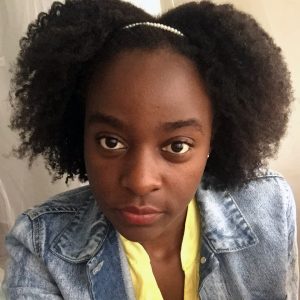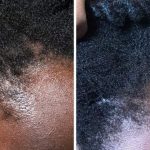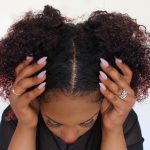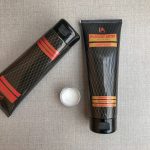
Another week, another post! Sort of. I’ve been gone for a bit (if you read all the way to the end you’ll find out why), but I am back with a new blogging series on Traction Alopecia (TA). In this series, I will dive into the condition that plagues many women; so come on in with me, the water is warm 😀 😀
What is Traction Alopecia?
Traction Alopecia is gradual hair loss caused by damage to the hair follicles from prolonged or repeated tension on the hair roots. The word “Alopecia” simply means hair loss. There are many forms of Alopecia. I will specifically share with you about Traction Alopecia because this is what I have experienced myself, and I have been on a journey to mitigate it which I briefly mention here.
Causes of Traction Alopecia
All hairstyles that apply excessive tension on your scalp will lead you down this path. How many people have you heard crying about their edges? A lot of people.
- Scalp-pulling hairstyles, including tight braids, long/heavy braids, cornrows, and tight puffs/ponytails.
- Hair extensions or weaves: Extensions are tightly sewn or glued to the base of the hair, which will cause tension at the hair roots.
- Hair accessories, like bobby pins, and puff holders that are worn in the same way every day.
- Headwear, such as elastic headbands and helmets which may cause the hair to thin where the headwear makes contact with the hair.
- Hair relaxers and other chemical treatments. These change the structure of the hair shaft, which in turn fosters hair loss.
- Using extensions and relaxers together. According to one study, this was the most significant risk factor for traction alopecia.
Each one of us has done at least one thing on this list – braiding was my cup of tea. The tragedy is that many hairstyles we use to retain hair length (or simply for a new look) actually lead to hair and scalp damage.
Signs and stages of Traction Alopecia
The most treacherous thing about this condition is that it’s gradual, and most people do not realize they have traction alopecia until it’s too late. Traction alopecia will cause permanent baldness. Furthermore, each individual has a different tolerance to the amount of tension/traction on the hair follicles required to produce symptoms of pain or signs of TA. Clinically, TA most often affects the frontal and temporal scalp; however, it can also occur on many different regions of the scalp depending on your hair practices.
The extent of traction alopecia varies from mild to extensive. We have:
1. Early/Mild stage traction alopecia

This mostly affects the frontal regions (the edges). Signs include:
- Inflammation
- Small pimples appear on the scalp or at the base of braids (Folliculitis)
- Redness or darkening of affected areas (Perifollicular erythema)
- Itching, and wounds on the scalp.
- Patches of thin or broken hair in areas of strain.
2. Mid stage traction alopecia

Mid stage TA
- Receding hairline typically around the forehead, temples, or nape.
- Widening hair parting.
2. Extensive/late-stage traction alopecia

late stage TA
- Patches of shiny, scarred skin.
- Permanent baldness.
It is important to note that some signs and symptoms may overlap. Be vigilant about changes to the thickness, strength, and texture of your hair.
More posts to come in the following weeks on prevention and possible remedies. Fiona Kemi will be joining us as well. Until then take some time to examine your scalp for signs of TA.







Patsy Mugabi
20 October, 2018 at 8:16 pm
School us, we are your students.
Totally excited for the next one.
Phelis Nakato
22 October, 2018 at 9:29 am
But Patsy! hahah 😀 😀